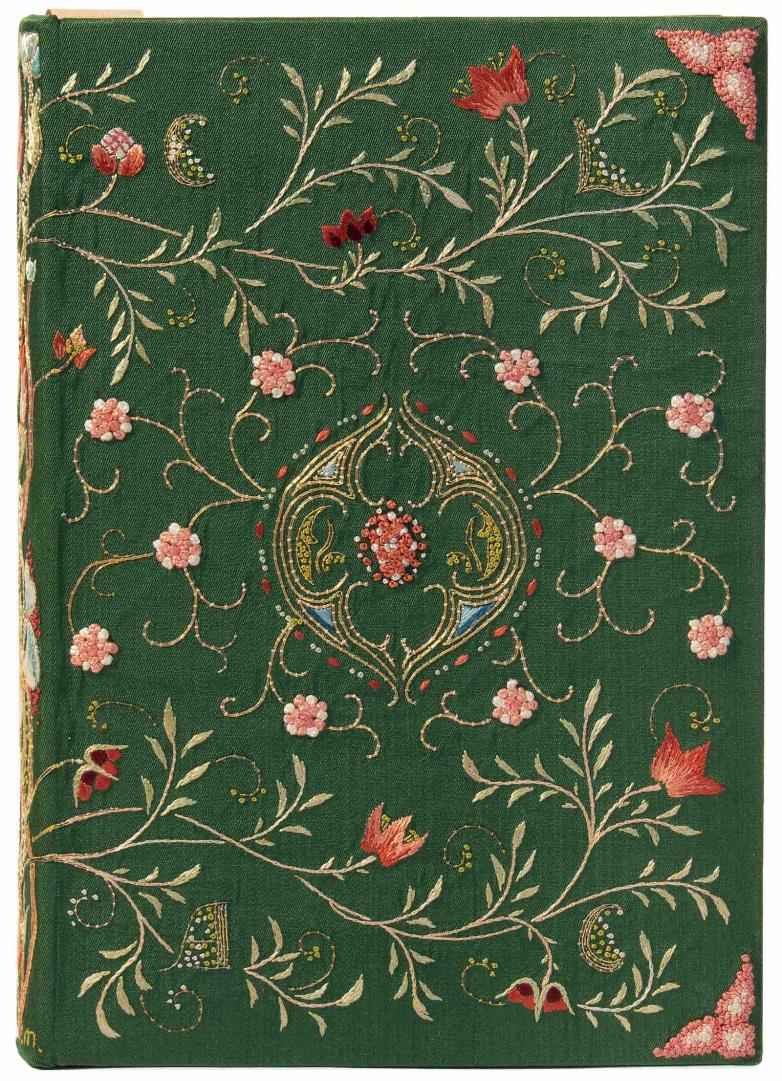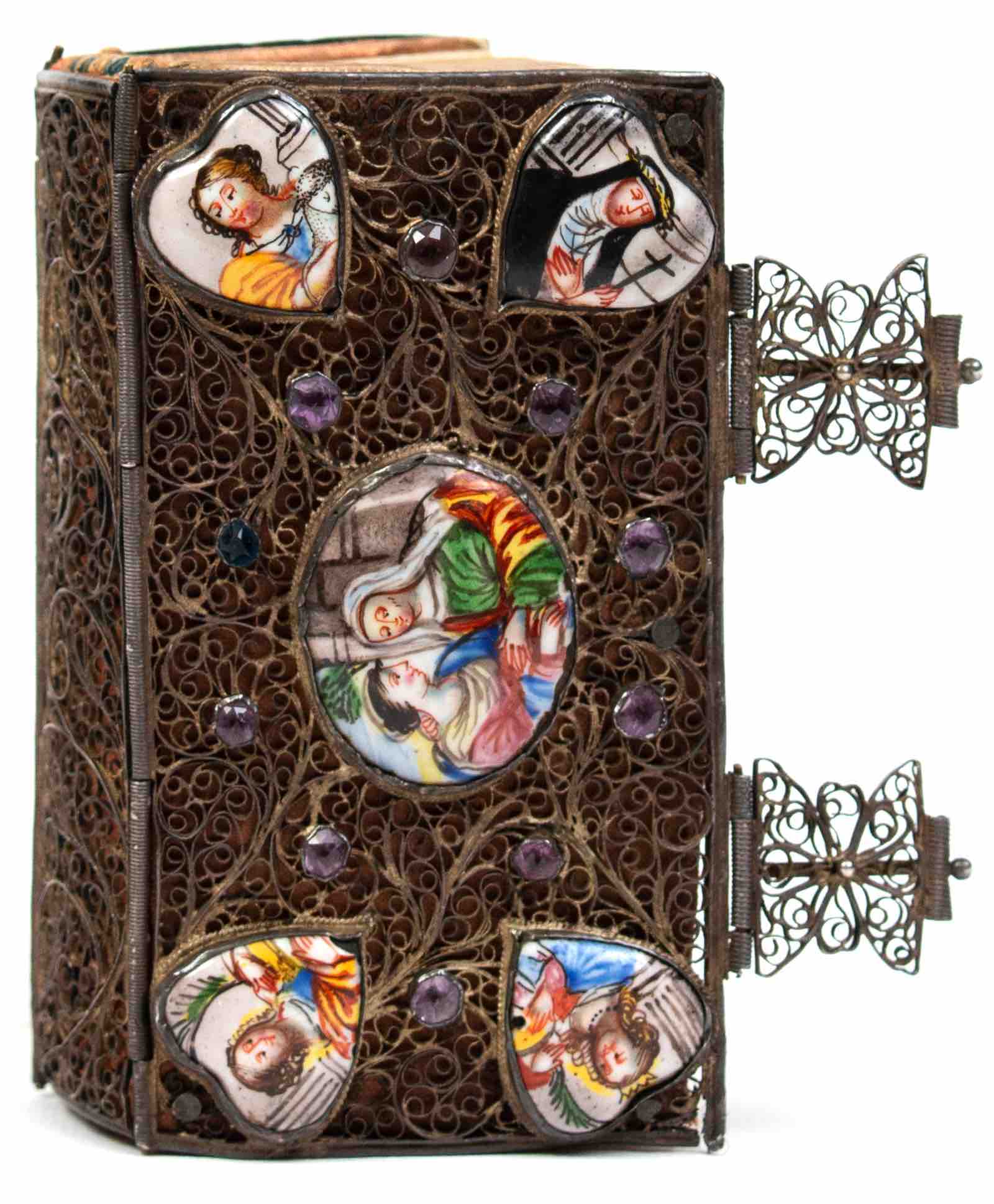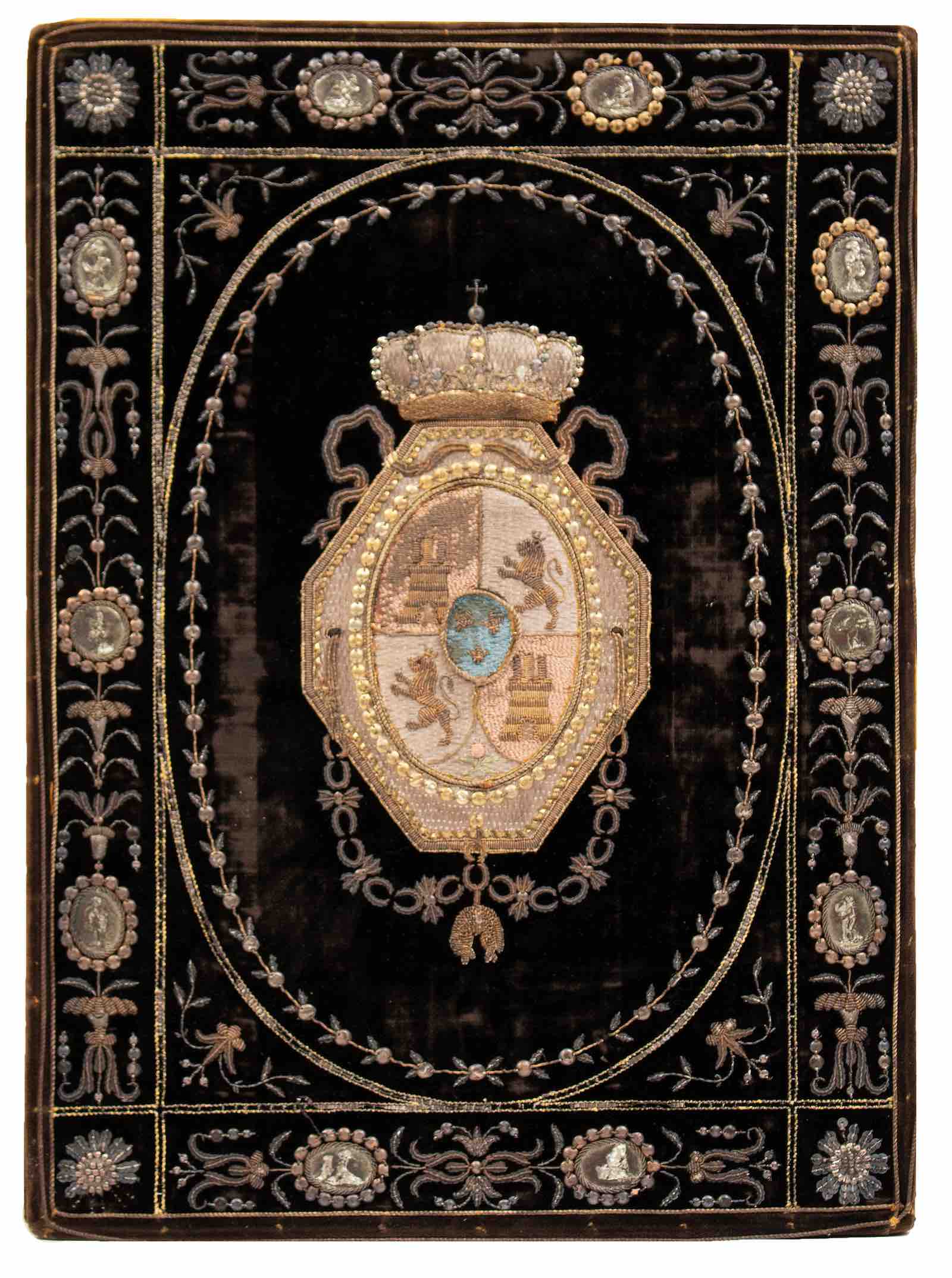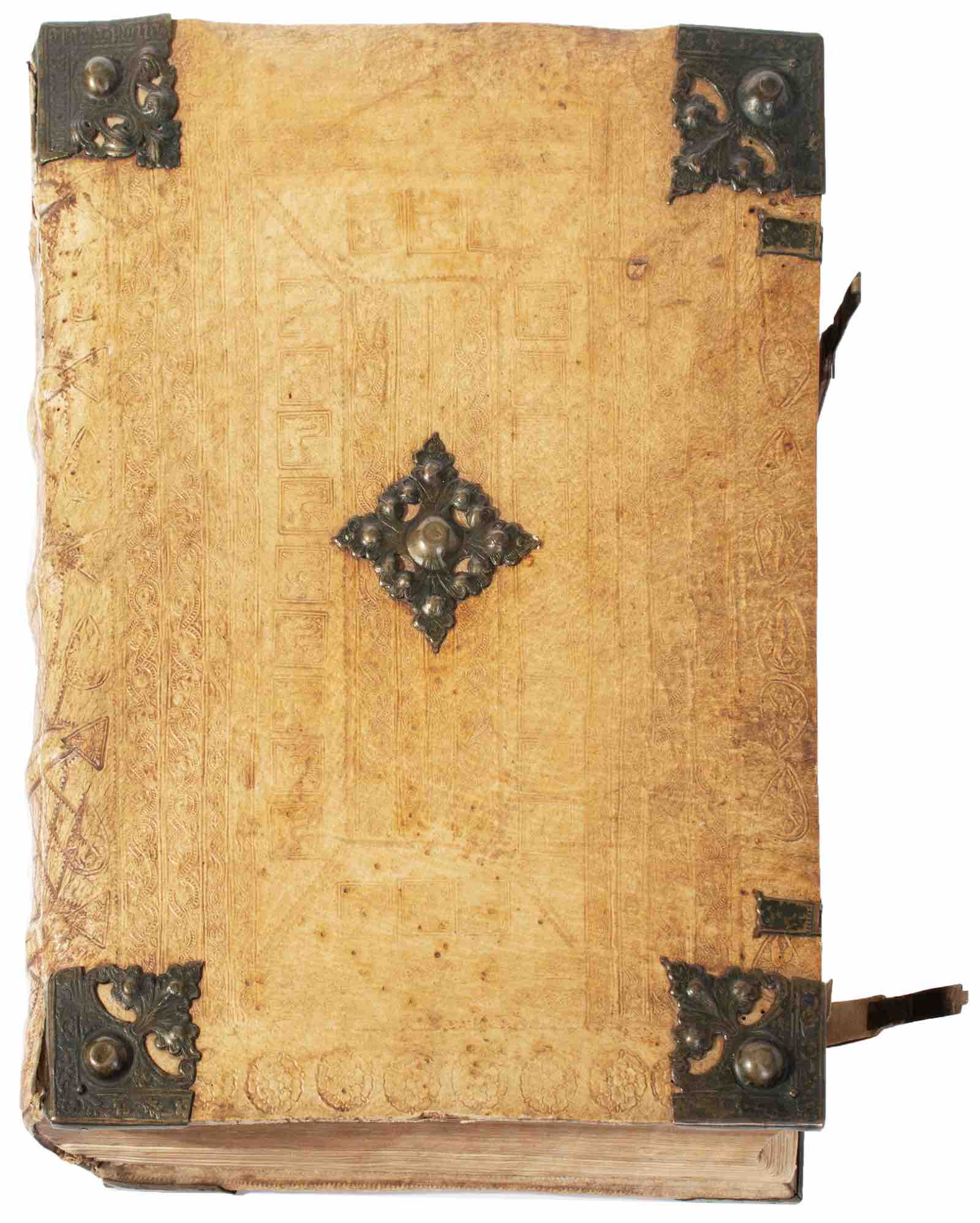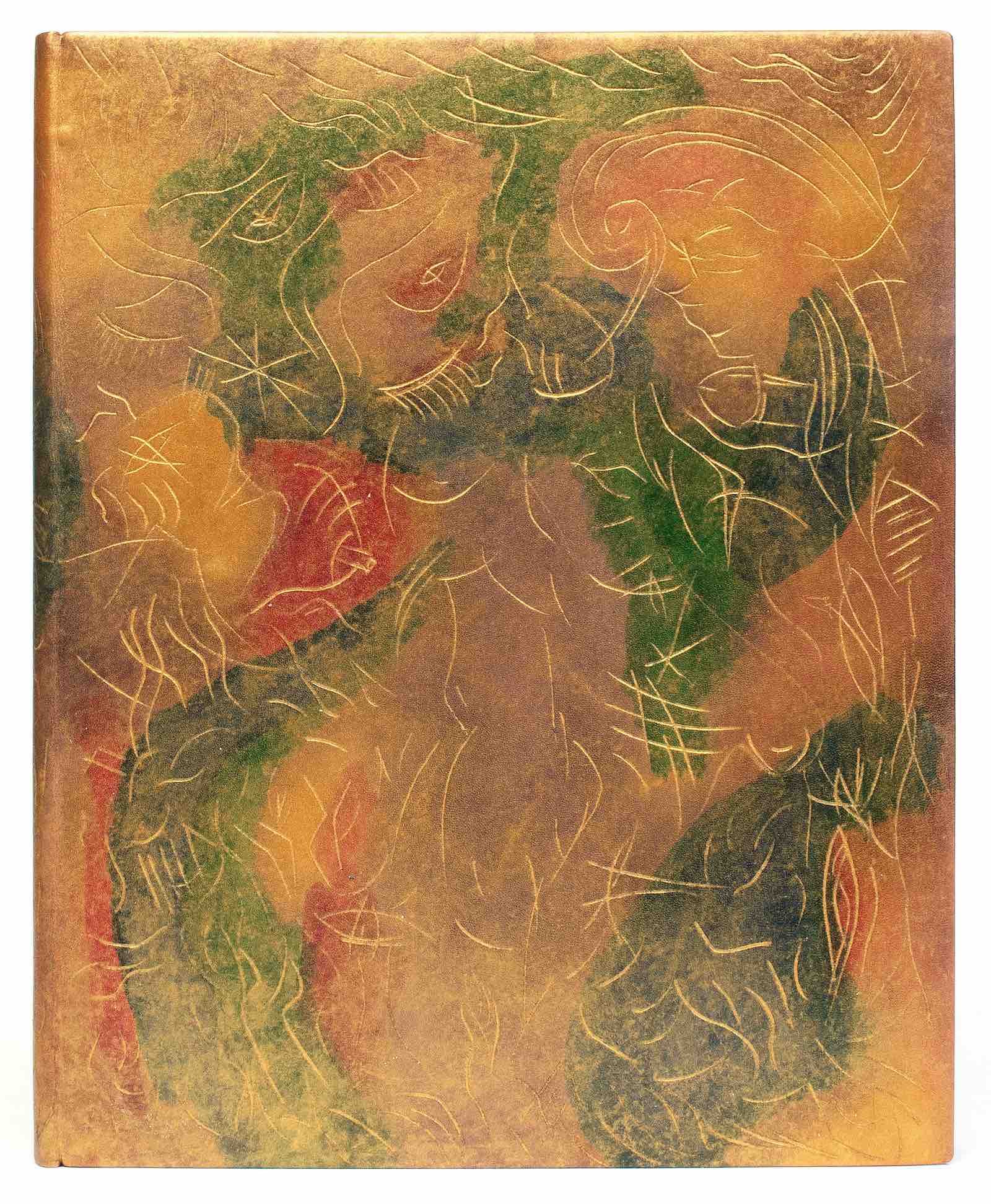Other highlights include:
* a silver filigreed and jeweled binding on a miniature 1673 Book of Hours which features painted enamel portraits of saints and angels ringed by 14 small amethysts on the front and back covers
* a 1789 black velvet mourning binding adorning a publication memorializing the papal funeral ceremony of Charles III of Spain. The dedication copy made for his son King Charles IV features gold and silver embroidery, appliqués of his family crest topped with a crown, and silver coins embedded around the borders.
* the 1547-1555 binding for a book from the collection of Jean Grolier - the renowned bibliophile after whom the Club is named - which features dark brown calfskin and gilt embossing in a Cupid’s Bow design
* a London Restoration period binding, ca. 1676 featuring elaborate gilt floral designs on black goatskin, including curving vines, sunflowers, tulips, pomegranates, and large cabbage roses, as well as a distinctive bird that Fletcher calls “The Reluctant Falcon”
* May Morris, daughter of William Morris and director of embroidery at Morris & Co., created the ca. 1888 floral embroidered binding for the publication Embroidery and Lace: Their Manufacture and History from the Remotest Antiquity to the Present Day by Ernest Lefébure. Featuring bright green ribbed silk and pink flowers, with a central arabesque on the cover, Morris signed the spine “.m.” at the bottom right corner.
The Grolier Club will host related free public programs including lunchtime exhibition tours on January 18, January 25, February 8, February 29, March 14, and April 3, all 1pm-2pm. A lecture during Bibliography Week will be held on January 24, at 2.30pm, and a virtual tour and Curator Q&A will take place on April 9 at 6pm. More details at http://grolierclub.eventbrite.com.

